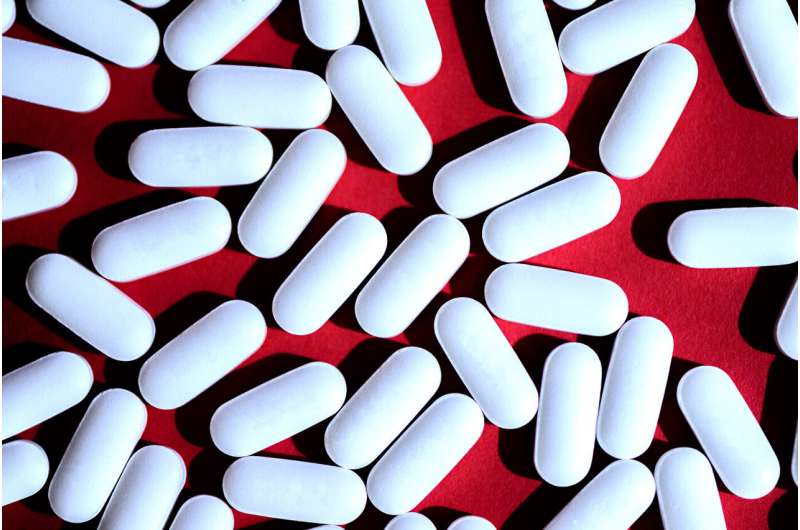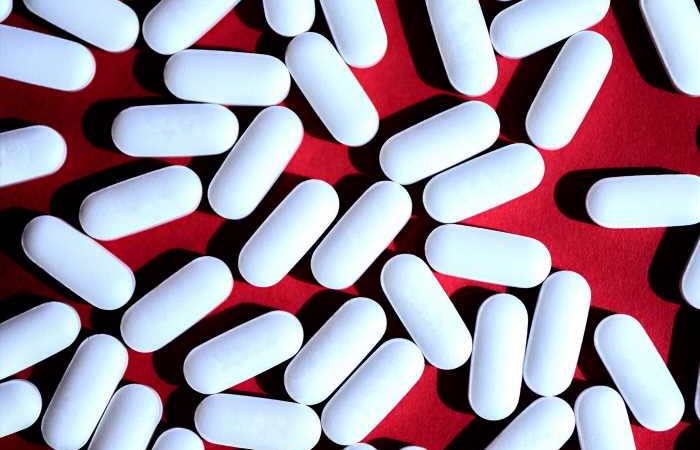
With pediatric pain and fever medications in short supply, many parents are eyeing their bottles of adult acetaminophen with an eye on cutting down the dosage for their children.
Brandon Dionne, associate clinical professor in Northeastern’s School of Pharmacy, urges caution.
Acetaminophen in tablets for adults is the same active ingredient in acetaminophen liquid drops and chewable tablets for children, he says. But unlike dosages for adults, pediatric dosages are based on age and weight, Dionne says.
“For adults, you have fixed dosages,” Dionne says. The minimum adult dose of acetaminophen is a 325-milligram regular strength tablet every three to four hours, he says. The maximum dose for that time period is 500 milligrams.
Compare that to the dosage scale for children published by the company that makes Tylenol, a name brand for acetaminophen.
Tylenol says on its website that the dose for a child between the ages of 9 and 10 who weighs between 60 to 71 pounds is 400 milligrams.
For a 4- to 5-year-old child weighing between 36 to 47 pounds, the maximum single dose drops to 240 milligrams.
“It would be hard to make some of those doses with adult formulations,” Dionne says, adding that getting the exact measurement is important.
Tylenol warns on its website against cutting adult doses for children.
But so many parents are doing exactly that that a poison control organization in Canada, which started experiencing the shortage of pediatric acetaminophen before the United States, has published a conversion dosing guide for parents.
The Ontario Poison Center guide to alternatives to infant and children’s liquid pain medication lists dosage conversions for both acetaminophen, based on a 325-milligram tablet, and for ibuprofen based on a 200-milligram tablet.
Ibuprofen is a pain and fever reducer that is also anti-inflammatory, Dionne says.
For a child weighing 12.1 to 17.6 pounds, which according to Tylenol correlates to a child between the ages of 4 to 11 months, would get one-quarter of a 325-milligram acetaminophen tablet, according to the poison center guide.
A child weighing 16.5 to 23.8 pounds would get a third and a youngster between 23.9 to 35.7 pounds would get a half.
The Ontario Poison Control Center, which also established maximum doses per day, says children weighing between 11 and 22 pounds should only take a quarter of a 200-milligram ibuprofen tablet.
A pill cutter can help parents cut the tablet down correctly.
But Dionne says that is especially challenging with ibuprofen since the pills are so small.
There is also the issue of getting children to take the medication, he says.
“You’re going to have to try to crush it up and hide it in some food. It’s not as easy as giving them the liquid formulation or a chewable tablet,” Dionne says.
The Ontario Poison Control Center advises parents to call their pharmacist for advice on crushing and serving the acetaminophen or ibuprofen, but in the meantime parent social media sites are full of advice—and admonitions.
Acute shortage of oral amoxicillin
There is also an acute shortage of oral amoxicillin, according to the FDA. Parents of children with ear and respiratory infections report being prescribed half the amount of the liquid medication due to limited supplies.
Parents are being advised to “check back later” and grab generic alternatives if they are available, according to ABC News.
The news service says that instead of using automated E-scripts that send prescriptions directly from physician offices to specific drugstores, parents should consider asking for written prescriptions in case they have to check out several different pharmacies.
“You could ask for a paper prescription,” Dionne says.
Another possible alternative is using a compounding pharmacy, Dionne says.
Compounding pharmacies combine ingredients in house to meet patients’ specific needs and might be available to make pediatric versions of amoxicillin, for instance, he says.
Dionne says people can search for compounding pharmacies in their area at Find A Compounder and Find a Provider.
The shortage of pediatric medications is being spurred by a “tripledemic” of pediatric RSV, flu and COVID-19, health experts say.
Really a supply chain problem
But there’s really no excuse for the problem, which is a supply chain issue, says Nada Sanders, a distinguished professor at Northeastern’s D’Amore-McKim School of Business.
As winter approaches with more possibility of illness, “I would like to see more reassurances from a supply chain standpoint in terms of what does the supply chain look like,” Sanders says.
“The fact that we’re seeing shortages is definitely alarming,” says Neil Maniar, director of Northeastern’s master of public health program.
Acetaminophen and amoxicillin “are really important medications,” Maniar says. “They’re really important tools to help manage illness and to treat the illness.”
Dionne says that while amoxicillin plays a vital role in combating bacterial infections, he adds, “It is too often overprescribed for viral infections, which can have unintended consequences. Parents can ask their child’s pediatrician whether an antibiotic is absolutely necessary.”
He says that whatever parents do, they should not hoard pediatric medications. That will only make it harder for children who are ill to get them, Dionne says.
Source: Read Full Article
